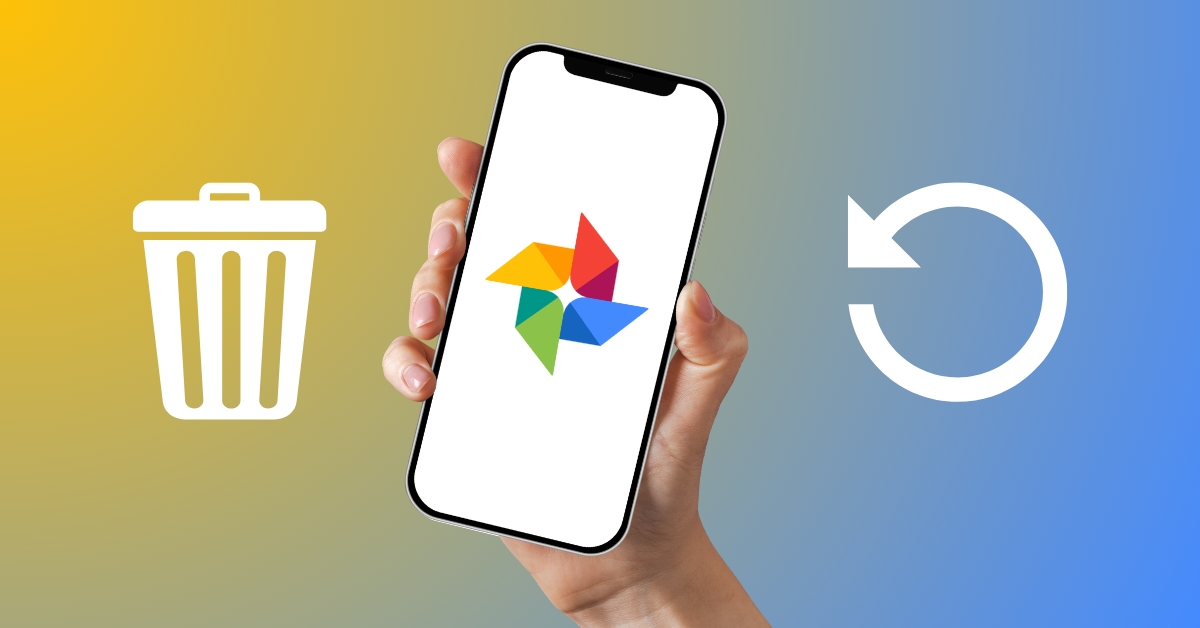Think It’s Gone? Think Again. One Tap Brings It All Back
Accidentally deleted your photos, videos, or files? Don’t panic — our smart recovery tool gets everything back in moments, effortlessly.
Anúncios
In just minutes, it scans your device and restores what’s gone — no complicated setup, no wasted time. Just fast, flawless recovery.
Your device isn’t where your data’s story ends. With this next-generation solution, your memories, projects, and files stay protected, accessible, and ready to return whenever you need them.
What do you want to do?
When Technology Breaks Your Heart: Rediscovering What’s Lost in the Digital Abyss
Our phones are no longer just pieces of metal and glass — they are extensions of who we are.
They carry our laughter, our late-night thoughts, our spontaneous creativity, and our irreplaceable moments. They are the portable archives of our lives — part time machine, part journal, part companion.
Anúncios
Inside that sleek rectangle lives the essence of your daily existence. Your milestones, your milestones, your firsts and lasts, your notes to self, your reminders of love, growth, and chaos — all resting quietly in pixels and code.
But then, it happens. Without warning.
You unlock your phone to relive a memory — maybe it’s a photo of the sunset that healed you, a birthday video that makes you smile every time, or a recording of a laugh you can’t hear anymore.
And suddenly… it’s gone.
The folder is empty. The gallery is blank. The video won’t play.
You refresh, restart, and hope it’s just a glitch. But that sinking feeling grows heavier with every second. What once felt safe and untouchable has simply vanished — like a page torn from the story of your life.
That’s not a minor inconvenience.
That’s heartbreak — digital heartbreak.
Why Losing Data Hurts Like Losing a Memory
When a file disappears, it’s not just information you’re missing. It’s emotion.
A lost photo isn’t a bunch of pixels — it’s the curve of a familiar smile, the glow of a moment that can never be repeated.
A deleted video isn’t just storage space cleared — it’s the laughter of a friend, the sound of joy that once filled your world.
A vanished document isn’t only lost work — it’s hours of focus, creativity, and effort, gone in an instant.
That’s why data loss feels so human — because we’ve come to trust our devices like we trust our memories. And when they fail us, it feels like betrayal.
But here’s the truth that most people never realize: in the digital world, “gone” doesn’t always mean “gone forever.”
The Secret Life of Deleted Files
When you delete a file, your phone doesn’t immediately destroy it. Instead, it quietly marks that space as available — waiting for something new to overwrite it.
Think of it like erasing a line from a library index. The book itself is still there, gathering dust on the shelf, waiting to be discovered again.
And that’s where recovery comes in — the modern-day magic that turns despair into relief.
Recovery software acts like a skilled librarian of the digital world — combing through the invisible stacks of lost data, finding those forgotten pieces, and putting them back in your hands.
But here’s the catch: time matters.
The longer you wait, the more likely your precious memories get overwritten by new data.
Speed isn’t just a suggestion — it’s the difference between recovery and regret.
Why Data Disappears — and How to Stop It
Contrary to what many believe, you don’t need to drop your phone in water or experience a catastrophic system crash to lose data.
Most losses happen quietly — through tiny, everyday mistakes.
- One accidental tap deletes an entire folder.
- A “cleaner” app removes files it shouldn’t.
- A software update resets your storage.
- An SD card suddenly stops responding.
- Your phone runs out of space and auto-deletes “unnecessary” items.
Sound familiar? You’re not alone.
But here’s the good news: in most of these cases, your files aren’t truly gone. They’re simply invisible — buried beneath layers of new data, waiting to be recovered.
If you act quickly, the process can be simple, effective, and even surprisingly empowering.
Android or iPhone — Different Worlds, Same Solution
Whether you hold an Android or an iPhone, your memories deserve a comeback.
For Android users, recovery tools dive deep. They can scan internal storage, SD cards, and even system caches — often without root access. With the right permissions, they can reach digital depths you didn’t even know existed.
For iPhone users, Apple’s ecosystem provides its own safety nets. Photos linger for 30 days in “Recently Deleted.” Invisible iCloud backups hold snapshots of your data, even when you think it’s gone. Professional tools can extract photos, messages, and documents from these backups — restoring what felt impossible to recover.
Different platforms. Same mission: to bring your memories home.
Real Tools That Actually Work
When panic hits, you don’t have time to gamble with random apps. You need solutions that work — tested, trusted, and proven.
Here are some of the tools that users around the globe swear by:
- DiskDigger (Android): Fast, reliable, and perfect for restoring photos and videos in seconds.
- Dr.Fone (Android & iOS): A complete recovery suite that brings back images, chats, contacts, and even documents.
- Tenorshare UltData (Android & iOS): Lets you preview files before recovery — saving time and storage.
- Dumpster (Android): Works like a recycle bin for your phone — automatically storing deleted files for future recovery.
Each serves a purpose:
Need speed? Go with DiskDigger.
Want precision and flexibility? Dr.Fone or Tenorshare have your back.
These aren’t just apps — they’re digital lifelines.
How Recovery Really Works — The Invisible Process
Here’s what actually happens when you use recovery software — the science behind the second chance:
- Install a reliable recovery tool from an official source.
- Grant storage access so the tool can scan deep into your memory.
- Select the data type you want back — photos, messages, documents, or videos.
- Run the deep scan. This process can take anywhere from minutes to hours, depending on your phone.
- Preview and recover. Choose what matters most and restore them carefully.
- Save your recovered files elsewhere — on a computer or cloud — to avoid overwriting.
It’s like performing digital surgery. Precision and patience are everything.
Expert Tips to Increase Your Chances
To make your recovery as successful as possible, remember these pro moves:
- Stop using your phone immediately. Every new photo or app update can erase your lost data permanently.
- Don’t install new software until the recovery is complete.
- Keep your battery charged. Interruptions can corrupt your scan.
- Store recovered files elsewhere. Never restore to the same device.
- Back up immediately after recovery.
Each of these steps can make the difference between getting your memories back — or losing them forever.
Prevention: The True Power Move
Recovery is incredible — but prevention is freedom.
To protect yourself from ever experiencing that helpless feeling again, make these habits part of your digital life:
- Turn on automatic cloud backups (Google Photos, iCloud, or OneDrive).
- Regularly transfer important files to your computer or an external drive.
- Set monthly reminders to back up key folders.
- Use recycle bin apps like Dumpster or Recycle Master.
- Always double-check before deleting.
Losing your data once is unfortunate.
Losing it twice is a choice.
Free vs. Paid Tools — What’s Really Worth It?
Free recovery tools can save the day for small mistakes — a deleted photo here, a misplaced video there.
But when you’ve lost something truly valuable — like a year’s worth of pictures, an important project, or entire conversations — paid tools make all the difference.
They dig deeper, recognize more file types, and deliver better results.
Free tools are like first aid.
Paid tools? They’re the full hospital.
If your digital life truly matters — and it does — investing in the right recovery solution isn’t optional. It’s essential.
The Moment of Return — When the Lost Comes Back
There’s nothing quite like the rush when a file you thought was gone suddenly appears again on your screen. Relief floods in. Your heartbeat steadies. You smile without even realizing it.
Because in that moment, you’re not just restoring data — you’re reclaiming a part of your story.
The sound of laughter. The spark of inspiration. The snapshot of a time you’ll never relive but can now remember again.
That’s the real beauty of recovery. It’s not about technology — it’s about redemption.
A reminder that not everything lost is gone forever.
The Digital Comeback — Because Every Memory Deserves a Second Chance
So the next time your phone freezes, crashes, or wipes out your gallery, don’t panic.
Breathe.
Your memories aren’t lost — they’re waiting. Hidden beneath the surface, ready to return if you act wisely and fast.
Remember this:
- “Deleted” doesn’t mean “destroyed.”
- Backups are your best safety net.
- Recovery isn’t luck — it’s knowledge.
Your digital life deserves protection.
Your memories deserve revival.
Because in a world where our lives are built on screens, the smartest thing you can do is give what you’ve lost a way back home.











